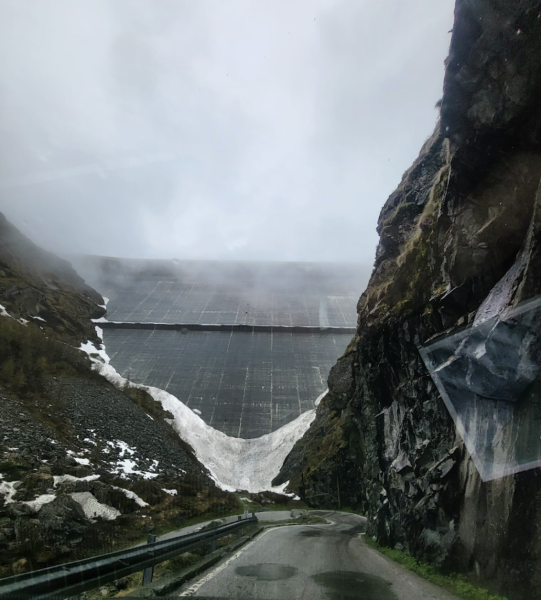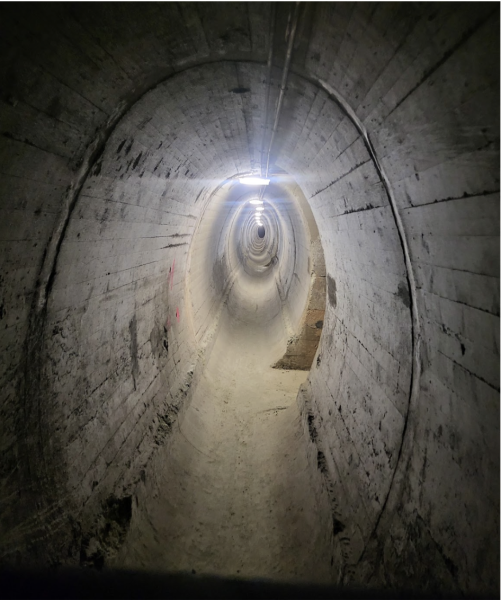When looking at countries’ energy production around the world, Switzerland ranks quite highly for renewable energy, falling behind leaders such as Finland and Sweden. We generated 72.1 billion kWh (Kilowatt-hours) of electricity in 2023: a 13% rise from the previous year. This energy was primarily some form of renewable, 56.6% from hydroelectric generation and 32.4% from nuclear plants (Federal Office of Electricity, 2024).

Hydroelectricity is Switzerland’s best friend. As of February 2023, Switzerland housed 682 hydroelectric power stations, which produce around two-thirds of the nation’s electricity. On top of that, there are 220 dams (Yes, they are not the same thing). Within that number is the Grande Dixence, the world’s highest gravity dam (Swiss Confederation, 2023). Found in the Canton Valais, the Grande Dixence produces around 2,000 Megawatts annually, that is equivalent to the electricity used by around 500,000 houses in a year.
Visiting the dam in person, I was able to see a more “behind the scenes” approach to how Switzerland’s energy is produced. The dam, as pictured, is 285 meters tall, and it’s thickness varies from 193m thick at the base and 15m at the crown (the top of the dam). Built in 1961, the dam is made up of 6 million m3 of concrete and weighs 150 million tons. The inside of the dam is full of kilometers of tunnels, used to navigate inside the construction and monitor its quality. Pictured is an image of one of these tunnels, showing the true depth of the build.

As mentioned earlier, Switzerland produces nuclear energy. This comes from the four power plants in the nation. Due to the 2011 Fukushima, Japan accident, Switzerland has decided to slowly phase out nuclear energy. The remaining power plants are located in Goesgen, Leibstadt, and two in Beznau. According to the World Nuclear Association, they generate 2,973 MWe, around 519,000 homes (Sunrun, 2023).
Now, this may sound like Switzerand has a sustainable approach to energy, and it’s production. However, Switzerland runs primarily on fossil fuels. Importing around 70% of its total energy consumption from oil-rich countries, Switzerland is not as climate-friendly as it would appear (Swiss Confederation, 2023). The 2019 Swiss Energy Act is working towards making Switzerland a more renewable and sustainable community. Goals include reducing capita energy consumption, phasing out nuclear energy, and developing more renewables to reduce the reliance on imported energy. These are all steps in the right direction, as they work towards the Swiss net-zero goal for 2050. Net-zero implies that a community or country has zero emissions, that they are living completely sustainably. The Climate Action Tracker estimates that 145 countries have net-zero targets (2023), a good step towards achieving the Sustainable Development Goals within the set deadline: 2030.
Overall, the steps towards a sustainable world are far from our current state as humanity. However, there are always steps we can take to do our parts. The obvious steps of turning lights off, and using less water are simple, however, the installation of solar panels and purchasing biogas certificates are bigger steps that you and your family can take. The global deadline is looming, and we are on track to hit the tipping point of 1.5° Celsius in the next few years (McCoy, 2024). If this happens, scientists and professionals around the world are certain that there is no rescuing our world.




